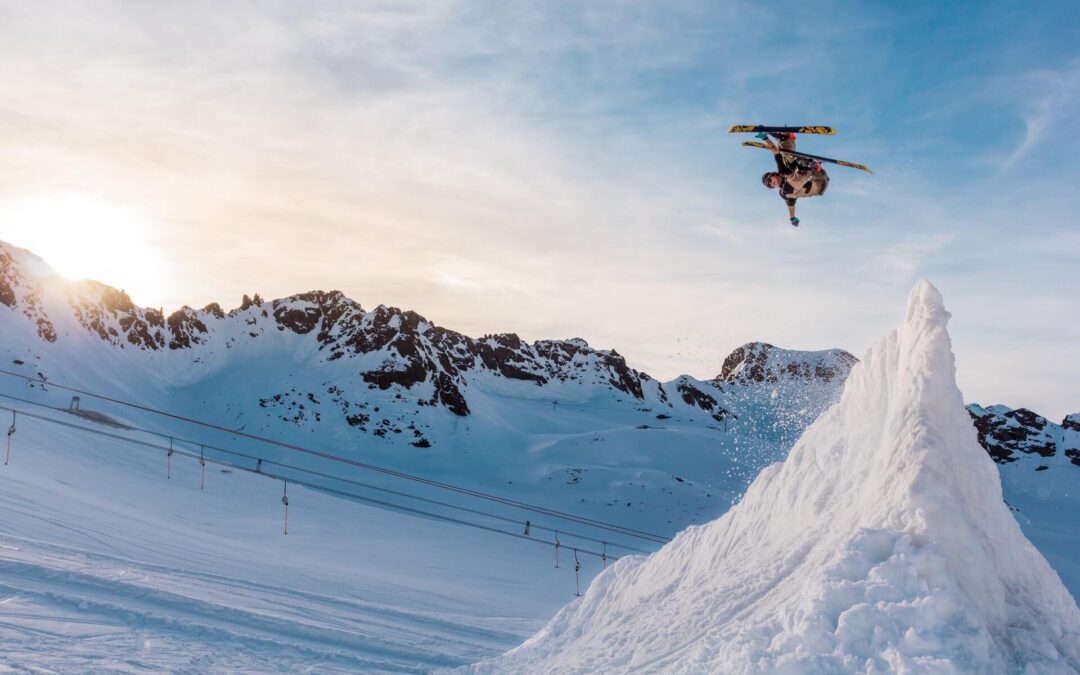Skiing holidays offer exhilarating experiences amidst stunning landscapes and invigorating runs, all while unintentionally toning your thighs, butt, and core. However, without proper preparation, skiing can pose injury risks. Read on for essential tips and exercises to enhance your strength, endurance, balance, and agility, ensuring you’re fully equipped to tackle the slopes safely and confidently.
Skiing injuries generally occur due to falls, collisions, poorly fitting ski equipment, and inadequately designed ski bindings, which can increase torsional stress on the knee. Fatigue from skiing at the end of the day or on consecutive days without proper training, adverse weather conditions affecting core temperature and vision, slippery or icy snow conditions, and poor technique also contribute to injury risks. Among the most common injuries are knee ligament and cartilage injuries, particularly tears in the medial collateral ligaments (MCL), anterior cruciate ligaments (ACL), and the medial meniscus. Additionally, landing on hands to break a fall can easily lead to wrist and shoulder girdle injuries.
For safety, you need to have the strength, muscular endurance, agility, reflexes, and motor control to maintain the classic parallel squat position and stabilize yourself from sudden disturbances in terrain. Your ski-specific workouts should incorporate exercises to improve your eccentric quad strength, ability to absorb forces (plyometrics), reflexes, balance, and rotational control of your trunk.
Below are some suggested examples of Ski Strength & Conditioning. For complete break-downs of these exercises, plus a comprehensive library of exercises plus online classes, please find out more here.
1. Full-range Squat
for correct knee alignment in squatting, leg strength and glute strength.
2. Skater to Curtsy Squat
for multi-directional leg stability and strength. Sitting your hips back strengthens the glutes more than if you were to shift your knees further over the toes.
3. Single Leg Romanian Deadlift
(“Drinking Bird’) for stability and strength in the legs, hips and core.
4. Crossed Pistol Squat (Advanced)
for multi-directional leg strength and the strength to resist rotational forces acting on the knee.
5. Russian Twist
An example of a core exercise which targets rotational control is the russian twist.
Warm Up
Warm-up before you train. An example warm-up can be viewed in the video below.
Stretching of muscles that are short and tight (front of the thighs and lower legs are good areas for skiing), and performing guided self-mobilisations for joint restrictions.
Tips to get your ready for your ski trip
- Start your ski fitness program at least six to eight weeks before your trip. Target ski-specific muscles, focusing on the thighs, butt, and core stabilizers. Incorporate eccentric leg extensor exercises to prepare for the demands of skiing. The legs will predominantly be working eccentrically throughout skiing to maintain your squat position and stabilise throughout uneven terrain, so ensure your training incorporates eccentric leg extensor exercises. To get started, check out my online strength and conditioning coaching.
- Continue ski lessons on the snow to refine technique.
- Before hitting the slopes, warm up with easy runs and stretches to reduce the risk of injuries.
- Take regular breaks for hydration and nutrition, opting for high-quality snacks to maintain energy levels.
- Keep in mind that although the slopes are enticingly less crowded at the end of the day, fatigue can set in and cause some grief. Monitor your energy levels and focus on maintaining good technique.
- Ensure adequate rest by aiming for 8 hours of sleep each night and avoiding excessive drinking, which can impair your neuromuscular function.
- Find good quality and correctly fitting boots, skis, bindings and consider clothing that breathes, conserves heat or cools by evaporation.
- Have fun!
In conclusion, preparing for your ski trip involves more than just packing your gear. By following a comprehensive ski fitness program targeting ski-specific muscles and incorporating proper technique, you can enhance your performance on the slopes and reduce the risk of injury. Remember to start your training well in advance, stay hydrated and fueled during your ski days, and prioritize rest and recovery. With the right preparation and mindset, you can make the most of your skiing adventure while staying safe and enjoying every moment on the mountain.
